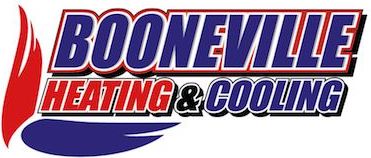
If you’re thinking about air conditioner installation in Booneville, you should also be considering your new air conditioner’s SEER rating.
SEER means Seasonal Energy Efficiency Rating. Simply put, it gauges how capable your air conditioner is at transforming electricity into cold air. A greater number means your air conditioner is more efficient, which is good for your electric bills.
However, there are a lot of varying models on the market for air conditioners. And a greater SEER number frequently is accompanied by a bigger cost. So, how can you find out which one is ideal for your home?
At Booneville Heating & Cooling, we give you a free, no-pressure home comfort analysis. You can book one by contacting us at 662-269-8716. Our skilled air conditioner installers will work with you to help you locate the right air conditioner for your needs. Plus, they’ll also provide you with a free, no-obligation estimate.
For the time being, let’s go over SEER ratings and how they can influence your home’s comfort. And your electrical expenses.
Does SEER Rating Even Matter?
In 2016, the federal government developed new SEER criteria. New air conditioners must be at baseline 13 SEER in the north United States and 14 SEER in the southeast and southwest. If you’re not sure when you had your air conditioner installed or what its SEER rating is, you can find the sticker on the system outside your home. If you can’t locate the sticker, you can reach us at 662-269-8716 for help.
If your air conditioner was put in in advance of that time, it’s likely much less efficient. Air conditioner technology has rapidly advanced in the past couple of years, with huge advances in energy efficiency and smart home compatibility. Connecting your new air conditioner with a smart thermostat could help you spend less on electric costs, since the thermostat can intuitively change your temperature settings when you’re gone.
If your present air conditioner has a SEER rating between 8 and 10, adding a 14-SEER system could save you an estimated 30–50% on annual electrical costs. Your savings depend on your air conditioner size and your temperature settings.
Is the Higher the SEER the Better?
An air conditioner with a greater SEER rating will be more efficient at consuming electricity for cooling. The highest efficiency ones, which can go as big as 26 SEER, have ENERGY STAR® designation. This designation shows the air conditioner matches EPA guidelines for energy savings and environmental conservation.
While ENERGY STAR air conditioners are frequently more costly, you’ll generally get the difference back throughout the years through smaller power expenses. These air conditioners, which are generally rated 16 SEER and up, use about 8% less electricity than other new models, according to ENERGY STAR.
One of the greatest differences between a 14 SEER and 16 SEER is variable-speed capability. A variable-speed air conditioner can run at a number of speeds. This refines comfort for your loved ones while keeping your power expenses down. It can also keep temperatures and humidity more even, since it can run for longer without requiring a lot more electricity.
When adding a variable-speed air conditioner, you’ll have to check that your furnace or air handler is compatible. This is because your air conditioner uses this unit’s blower to distribute cold air across your home. Furnaces only work for approximately 20 years, so if yours is around that mark, we advise getting furnace installation at the same time so you can get all the perks of your variable-speed air conditioner.
When you’re ready to replace your air conditioner, the cooling pros at Booneville Heating & Cooling are here to assist you. Call us at 662-269-8716 to schedule your free home comfort analysis now.


